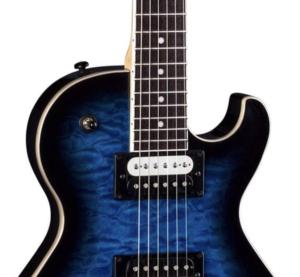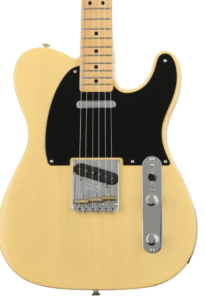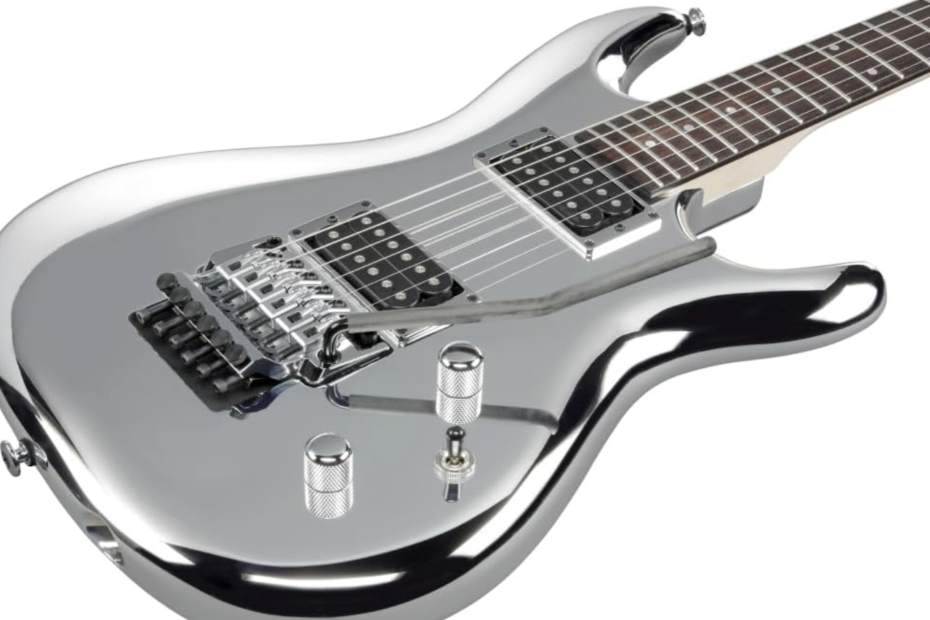Guitar playing, like any art form, is surrounded by myths, rumors, and misconceptions. While some guitar myths have their roots in reality, many of them are simply outdated or misunderstood ideas passed down through the years. Debunking these myths will help you become a better, more informed guitarist.
Here are the top 10 guitar myths debunked.
Myth #1: “You Need an Expensive Guitar to Sound Good”
 Many beginners think that a more expensive guitar automatically makes them a better player or improves their tone significantly. While high-end guitars can offer better craftsmanship and materials, they won’t necessarily make you sound great. The truth is, a skilled player can make a budget guitar sound incredible, while an inexperienced player might struggle to get a decent tone from a top-tier instrument.
Many beginners think that a more expensive guitar automatically makes them a better player or improves their tone significantly. While high-end guitars can offer better craftsmanship and materials, they won’t necessarily make you sound great. The truth is, a skilled player can make a budget guitar sound incredible, while an inexperienced player might struggle to get a decent tone from a top-tier instrument.
Debunked: The key to sounding good is practice, understanding your equipment, and proper setup. If you’re new to the world of guitars, check out our Best Guitars for Beginners: 2024 Edition to find budget-friendly options that still deliver quality sound.
Myth #2: “You Need to Learn on an Acoustic Guitar Before Playing Electric”
This is one of the most pervasive myths in the guitar world. Some believe that acoustic guitars, being harder to play due to thicker strings and higher action, will force beginners to build finger strength and technique before moving to electric. However, this isn’t necessary. In fact, for many beginners, electric guitars are easier to play due to their thinner strings and lower action.
Debunked: If you want to play electric guitar from day one, go for it! There’s no “right” way to start. What’s important is that you’re playing an instrument that inspires you.
Myth #3: “Thin Strings Make You Play Faster”
 It’s common to think that thinner strings will let you shred faster because they’re easier to press down. While it’s true that thinner strings offer less resistance, they can also make you less precise, cause tuning issues, and offer less tonal depth. On the other hand, thicker strings provide a fuller sound but require more strength.
It’s common to think that thinner strings will let you shred faster because they’re easier to press down. While it’s true that thinner strings offer less resistance, they can also make you less precise, cause tuning issues, and offer less tonal depth. On the other hand, thicker strings provide a fuller sound but require more strength.
Debunked: Speed comes from practice and technique, not string gauge. Experiment with different string sizes to find what works best for your playing style and tone preference. For more on getting the most out of your equipment, check out our Guitar Maintenance Tips for keeping your instrument in top shape.
Myth #4: “You Must Master Music Theory to Be a Great Guitarist”
Some players are put off by the idea that they need to master complex music theory to excel at guitar. While understanding theory can help in songwriting and improvisation, many famous guitarists have had minimal formal training in it. Icons like Jimi Hendrix and Eric Clapton relied more on feel, ear training, and experience.
Debunked: You don’t need to be a theory master to create amazing music. Learn enough theory to understand the basics, but focus on developing your ear and your creativity. If you’re interested in taking your improvisational skills to the next level, check out our article on Mastering the Art of Guitar Improvisation.
Myth #5: “Pedals Are Cheating”
Many traditionalists argue that using effects pedals detracts from your natural playing ability. The idea is that you should be able to create great tone and effects with just your hands, amp, and guitar. While technique is undoubtedly important, effects pedals are tools that have shaped countless iconic sounds in music history.
Debunked: Pedals aren’t cheating—they’re part of your tonal palette. Learning how to use them effectively is just as much a skill as mastering your instrument. For more on this, dive into our article on The Evolution of Guitar Pedals, where we explore how they’ve become integral to modern guitar playing.
Myth #6: “Electric Guitars Don’t Need Maintenance”
Electric guitars are often seen as lower maintenance compared to their acoustic counterparts, leading some players to believe that they can avoid regular upkeep. In reality, electric guitars require regular maintenance to ensure optimal performance. Everything from intonation and action to electronics can benefit from routine checkups.
Debunked: Just like any instrument, your electric guitar needs proper care. Learn how to adjust the truss rod, set intonation, and clean the electronics to keep your guitar in top condition. Our Guitar Maintenance Tips provide a comprehensive guide to keeping your instrument performing its best.
Myth #7: “You Need to Play Fast to Be a Good Guitarist”
 Speed is often glorified in the guitar community, especially in genres like rock and metal. However, speed alone doesn’t make a great guitarist. While fast runs can be impressive, they need to be combined with timing, phrasing, and expression to truly captivate an audience.
Speed is often glorified in the guitar community, especially in genres like rock and metal. However, speed alone doesn’t make a great guitarist. While fast runs can be impressive, they need to be combined with timing, phrasing, and expression to truly captivate an audience.
Debunked: Focus on musicality, not just speed. Some of the greatest solos are memorable because of their emotional depth and phrasing, not because they were played at lightning speed. Practicing slower, more deliberate playing can actually improve your overall technique.
Myth #8: “You Must Have Big Hands to Play Guitar”
Many aspiring guitarists worry that their hands are too small to properly play the guitar. This myth can be discouraging, but it’s simply not true. Players with smaller hands might find some adjustments necessary, but many famous guitarists (like Angus Young and Prince) have smaller hands and still excelled.
Debunked: Guitar playing is all about adapting to your own physicality. There are techniques and gear, such as shorter scale guitars, that can make things easier for players with smaller hands.
Myth #9: “You Need to Be Able to Read Music”
While reading traditional music notation can be helpful, especially for jazz and classical musicians, it’s not a requirement for most guitarists. Tabs, chord charts, and learning by ear are widely used, especially in contemporary and rock music.
Debunked: Many famous guitarists can’t read music but can play complex pieces and improvise masterfully. Don’t let a lack of notation-reading skills hold you back. Focus on developing your ear and understanding guitar tabs if that suits your learning style.
Myth #10: “Only Certain Amps Work for Specific Genres”
Some players believe that only a specific type of amplifier can work for a given genre—for example, a Marshall for rock or a Fender for blues. While these amps are iconic for those styles, the truth is, any amp can be shaped to suit different genres with the right settings and effects.
Debunked: Amps are versatile, and many models can be tweaked to suit a wide range of genres. Experiment with EQ, pedals, and settings to get the sound you want. For guitarists on the go, also check out our article on the 10 Best Portable Guitar Amps, which offers great options for versatile, compact sound.
Conclusion
By debunking these common guitar myths, you can approach your playing with a fresh perspective and focus on what truly matters—practice, creativity, and enjoyment. Whether you’re maintaining your gear, exploring new pedals, or mastering improvisation, remember that there’s no one-size-fits-all approach to guitar playing.
Keep experimenting, stay curious, and most importantly—keep playing!
